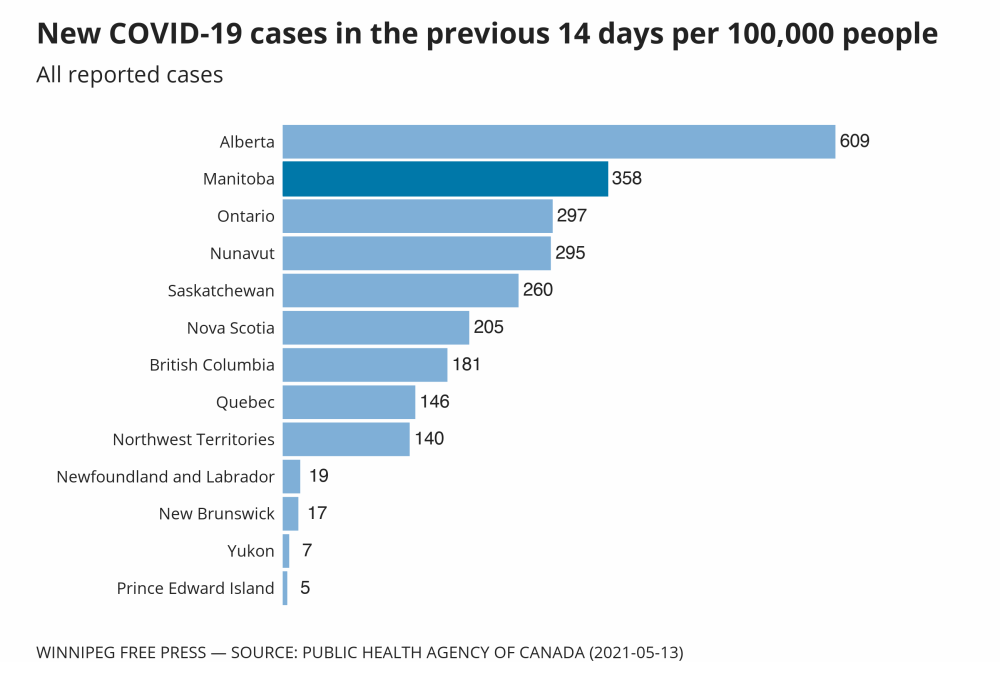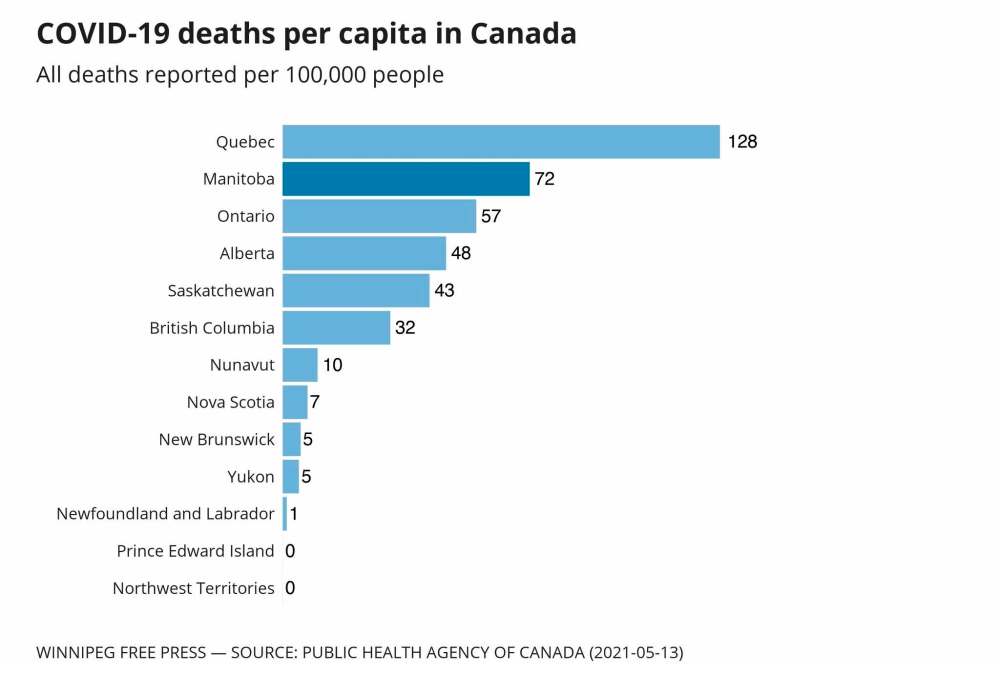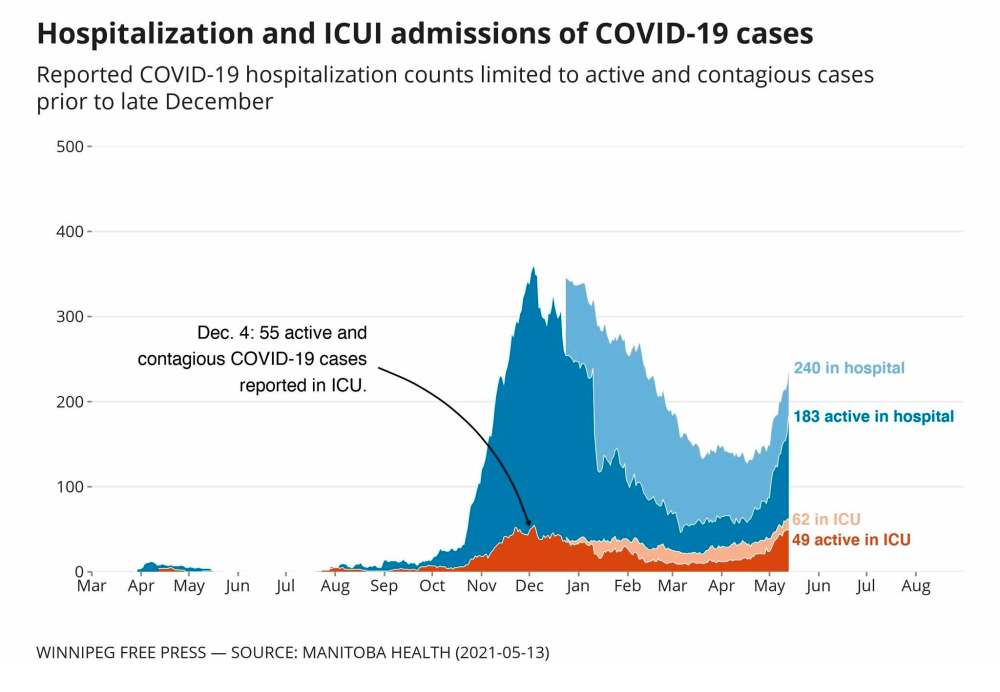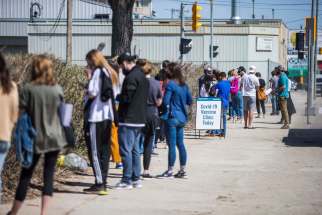Record number of new COVID-19 cases in Manitoba Thursday
Read this article for free:
or
Already have an account? Log in here »
To continue reading, please subscribe:
Monthly Digital Subscription
$0 for the first 4 weeks*
- Enjoy unlimited reading on winnipegfreepress.com
- Read the E-Edition, our digital replica newspaper
- Access News Break, our award-winning app
- Play interactive puzzles
*No charge for 4 weeks then price increases to the regular rate of $19.00 plus GST every four weeks. Offer available to new and qualified returning subscribers only. Cancel any time.
Monthly Digital Subscription
$4.75/week*
- Enjoy unlimited reading on winnipegfreepress.com
- Read the E-Edition, our digital replica newspaper
- Access News Break, our award-winning app
- Play interactive puzzles
*Billed as $19 plus GST every four weeks. Cancel any time.
To continue reading, please subscribe:
Add Free Press access to your Brandon Sun subscription for only an additional
$1 for the first 4 weeks*
*Your next subscription payment will increase by $1.00 and you will be charged $16.99 plus GST for four weeks. After four weeks, your payment will increase to $23.99 plus GST every four weeks.
Read unlimited articles for free today:
or
Already have an account? Log in here »
Hey there, time traveller!
This article was published 13/05/2021 (1675 days ago), so information in it may no longer be current.
Manitoba’s COVID-19 infection rate is second-highest in the country, and cases in Winnipeg are surging at a level higher than many major cities.
Another record-high — 560 cases in one day — was announced Thursday in the province.
Only Alberta has had higher case counts per 100,000 people over the past two weeks (609, compared to 358 in Manitoba).
Manitoba’s per capita COVID-19 death toll is just behind Quebec’s.
Average daily case counts in the province are more than six times higher than two months ago. It will take another week or two to see the results of stricter public health measures that came into effect May 9.
There’s not a clear need for increased restrictions right away, said Winnipeg-based epidemiologist Cynthia Carr, but understanding how Manitoba’s infection rates compare to the rest of the country is important.
“We are kind of creeping up on Alberta. They were much, much higher than us not very long ago. So just seeing that means we have to keep our sense of urgency, because we obviously don’t want to overtake those numbers,” Carr said Thursday.
Most of the novel coronavirus spread is in the capital, with 431 new cases confirmed in the Winnipeg health region, as of Thursday morning.
Within the city, some neighbourhoods are harder hit: Fort Garry, Seven Oaks, River East and downtown districts have the highest active cases, according to provincial data. (The province has previously acknowledged the real numbers of active cases are likely lower than what’s reflected in its data.)
Transmission isn’t happening to the same extent outside Winnipeg, but Carr cautioned, just as Brandon and Steinbach dealt with surges last year, and outbreaks later hit northern Manitoba, infection rates can increase rapidly in any area.
“We’ve seen that it moves, that it’s not just sticking with one area and now you’re safe,” she said.
“It would be really important for people in other regions to understand that, although right now the escalation of cases is clearly in Winnipeg, it doesn’t take much for the trends to change in other regions.”
There were 240 COVID-19 patients in Manitoba hospitals; 62 of them in intensive care. The ICU number will likely surpass the second-wave peak very soon, said attending physician Dr. Anand Kumar.
“It wouldn’t surprise me if we hit our previous ICU occupancy peak within a day or two,” he said Thursday. “Things are pretty dire.
“We hope the numbers will settle down in the next few days but, as you might expect, hitting 750 (daily COVID-19 cases) or more in the next few days or the next week is well within the realm of possibility.”
Kumar has been caring for patients in a Winnipeg ICU this week. He said it’s becoming more common not only to see younger patients but whole families become seriously ill with the virus — likely because the rise in highly contagious variants makes it more difficult for people to avoid infecting others within their own household.
“Seeing family clusters come in is really disturbing. When you see a mother and daughter or three or four members of the same family all in different ICUs or hospitals around the city at the same time, it’s quite disconcerting,” he said.
The province announced Thursday three more Manitobans had died of the virus, all after being infected with the now-dominant B.1.1.7 strain. A total of 1,002 Manitobans have died of COVID-19.
katie.may@freepress.mb.ca

Katie May is a general-assignment reporter for the Free Press.
Our newsroom depends on a growing audience of readers to power our journalism. If you are not a paid reader, please consider becoming a subscriber.
Our newsroom depends on its audience of readers to power our journalism. Thank you for your support.
History
Updated on Thursday, May 13, 2021 6:52 PM CDT: Updated story with quotes, graphics.












